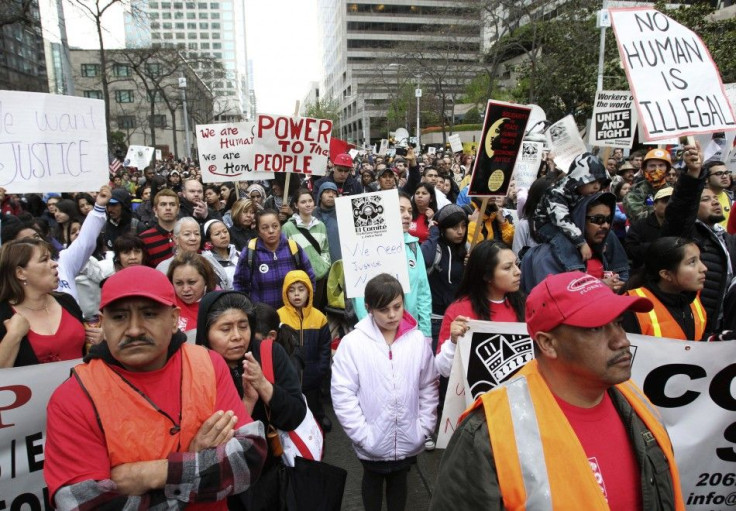Immigration Reform: Possibilities And Prospects
Opinion

Despite years of a stalemate between Republicans and Democrats on immigration reform, the other side of the border appears to be in view.
The standoff, to put it simply, came down to Republicans’ opinion that issues of “amnesty” would be perceived as rewarding illegal behavior. Democrats, conversely, have a long history of claiming humanitarian reasons for looser immigration laws.
Arguably, though, the baseline is political motivation for gaining votes.
That the interests of these odd political bedfellows are now aligning is integral -- especially considering that the future of our economy and our identity as a nation will be shaped by the outcome of this debate.
Following President Barack Obama’s landslide second-term victory, with record-setting support from Hispanic voters, key GOP members now speak about reform as a possibility -- instead of a burden -- for the first time in 100 years.
Hispanic voters backed Obama over his competitor former Gov. Mitt Romney 71 percent to 27 percent. This demographic has put their name on the map in 2012, voting at a record 23.7 million, up 80 percent since the 2000 presidential election, according to the Pew Research Center.
On. Jan. 28, the so-called “Gang of Eight,” comprised of four Democrats and four Republican senators, proposed a comprehensive reform package, including updating the current legal immigration system and a “tough but fair path” to citizenship for the 11 million or more undocumented immigrants throughout the country.
This bipartisan call to action comes not a moment too soon. Successful immigration reform could improve the nation’s image, broaden the tax base, retain much needed human capital, and revitalize the commitment to the country’s founding principals of freedom and opportunity.
It’s been almost 30 years since immigration gained this much traction, when President Ronald Reagan introduced the Immigration and Control Act of 1986. Amnesty was granted for the country’s three million or more undocumented immigrants, yet the reform portion of the act failed to take place.
Today, broad support for reform underlines the need to modernize U.S. immigration policies to accommodate and capitalize on our 21st century economy. We are not a nation homogeneous in race and religion. The economy and demographics in this country are no longer a “traditional” America.
The U.S. reached a tipping point in 2011 when the Census Bureau reported the first year in which Caucasian births were the minority (49.6 percent), compared to non-white births (50.4 percent), including Hispanics, blacks, Asians and mixed-race. A generation is being born in which so-called “minorities” are the majority.
Reform is critical in ensuring the next century of this country as rich and vibrant as the last. An alternative plan must be demanded from those opposing comprehensive reform. Radical pundits and opinion leaders on both sides of the aisle cannot cling to the immigration status quo.
Vested politicians stand to benefit from spearheading reform. Asian and Hispanic voters represent the two fastest-growing demographics in the nation. Today, there are approximately 16.3 million U.S.-born underage Latinos that will more than double the current Hispanic electorate by 2030.
There is much to gain by using the nation’s founding principles of freedom and economic opportunity to appeal to the country’s immigrants. We should take the long-view when it comes reform.
The country is in a unique place where good policy, good politics, and wide-reaching support for immigration reform could revitalize the economy and the energy of what it means to be an American.
Immigration has a long history as a positive force in America’s economic and cultural life. Streamlining the process for foreigners to enter the country legally and documenting current illegal immigrants in a systematic and responsible way would boost the nation’s recent lethargic economy. Immigration increases productivity and helps drive innovation.
Alex Nowrasteh, immigration specialist at the Cato Institute, estimates 40 percent of scientists in the U.S. are foreign-born. Additionally, Nowrasteh claims U.S. immigrants are twice as likely to start a business than native-born citizens.
The Congressional Budget Office estimated in 2007 that current proposed immigration reform would generate $48 billion in revenue over a 10-year period, while costing an estimated $23 billion in assisted welfare and health care payments. With comprehensive reform that incentivizes immigration of educated and skilled labor, the cost would likely be much lower.
Although progress seems within reach, key thorny issues still divide Congress. While it’s too early to celebrate a bipartisan success in Washington, the historic broad-backing support of reform puts more pressure and possibility on Washington than anytime in recent history.
Amber Christian is a freelance writer living in New York City.
© Copyright IBTimes 2024. All rights reserved.





















